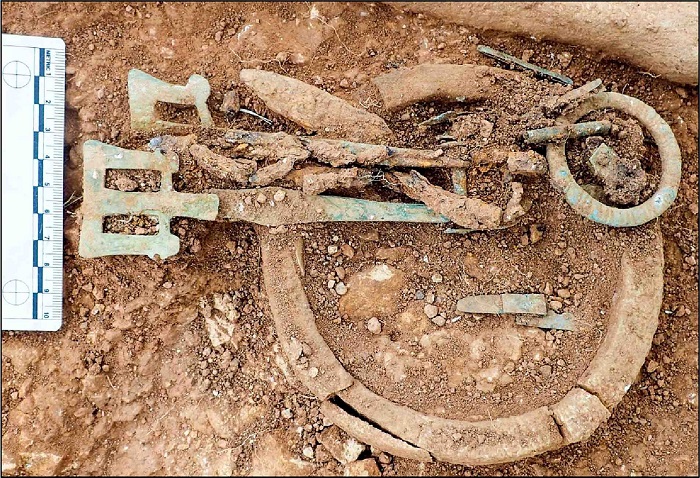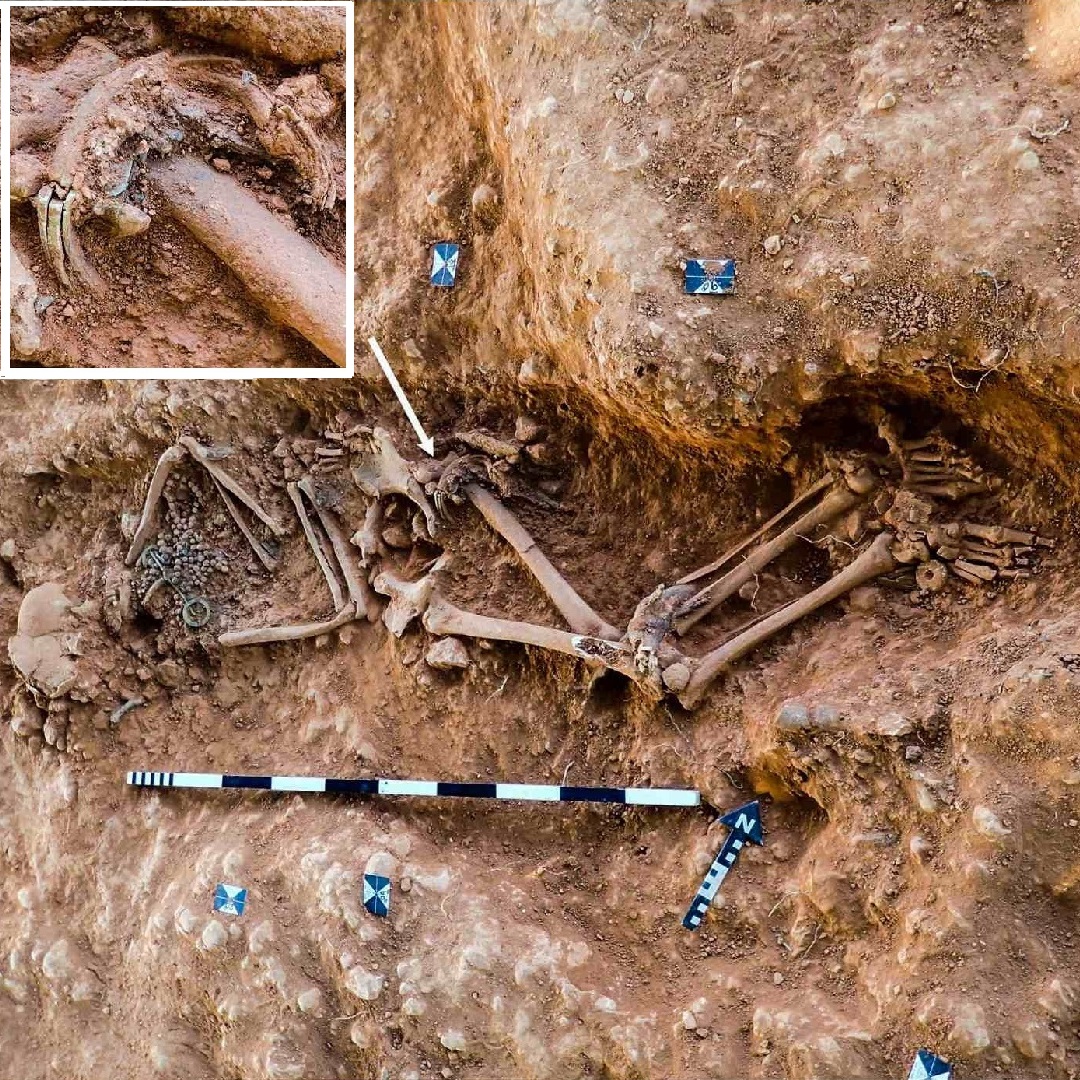Hundreds of elite Anglo-Saxon women were buried with mysterious ivory rings. Now, researchers know the ivory came from African elephants living about 4,000 miles away from England.
Archaeologists have been mystified for a long time by the presence of numerous “ivory rings” found in Anglo-Saxon burial sites in England. The animal source of these rings was unknown – were they from elephants, walruses or mammoths? However, recent research has established that the rings likely originated from African elephants living about 4,000 miles away.

The finding indicates a trading network brought the objects from eastern Africa and across post-Roman Europe to England — perhaps one of the longest trade route distances known from that time.
According to Dr. Hugh Willmott, an archaeologist from the University of Sheffield in the UK, it is a very lengthy journey. He commented that it involves crossing the Mediterranean Sea, traversing the Alps, and eventually going through the Rhineland which encompasses many different cultures.
The researchers analyzed one of seven so-called “bag rings” found in graves at an early Anglo-Saxon cemetery, dated to between the late 5th and early 6th centuries AD, near the village of Scremby, about 65 miles (110 km) east of Sheffield.
Examining the collagen protein of the ivory, the research group established that the ring had been crafted from the tusk of an African elephant (genus Loxodonta). Utilizing radiocarbon analysis, it was determined that the elephant had lived during the fifth century AD. The findings were published in the June issue of the Journal of Archaeological Science: Reports.

Mysterious rings
For over two centuries, archaeologists have been mystified by the presence of “bag rings” found at many Anglo-Saxon burial sites in England. Additionally, a small number of these rings have been discovered in other areas of northwestern Europe.
The rings measure between 4 and 6 inches (10 and 15 centimeters) across and they’ve been found only in the graves of wealthy Anglo-Saxon women.
Much too large to fit a finger, they were once thought to be ornaments for the upper arm. But archaeologists now think the rings were tied around the waist and held bags that functioned as pockets, holding whatever small objects the women had to hand. Willmott noted that the bags typically had random items within them, such as pieces of copper or Roman coins.
The fact that these artifacts were only found in the graves of the wealthy may suggest a certain social status; he stated, “They may have been associated with women who had a special place in society.”
Where ivory comes from?
The source of ivory has been a longstanding question. It is generally accepted that ivory is derived from the tusks of elephants. These tusks are composed of dentine, which is a type of calcified tissue. The dentine is then covered in a layer of enamel, which gives the ivory its characteristic color and texture.
The scientists additionally determined the proportion of strontium isotopes (forms of the element with different neutron counts) in the ivory, which is a method to learn the geological characteristics of the region. The findings revealed that the elephant had been living in a place with young volcanic rocks, which is most likely the Rift Valley of East Africa, according to Willmott.
The lack of finds of ivory workings in Anglo-Saxon England suggests the rings were crafted in Africa — probably in Aksum, a center for ivory working at that time — and then traded until they reached England. The few bag rings that have been discovered in continental Europe could be evidence of that trade.
Evidence reveals that Anglo-Saxons enjoyed ivory rings for a prolonged period of 100 years, according to Willmott. However, this custom seems to have vanished during the seventh century, perhaps because the established trade route had been disrupted.
Apart from this new evidence for importing African ivory, the Anglo-Saxons are known to have imported glassware from France, amber beads from the Baltic, amethyst beads from the eastern Mediterranean and cowrie shells from the Red Sea or India. But there are no records of the trading networks that supplied these items.

